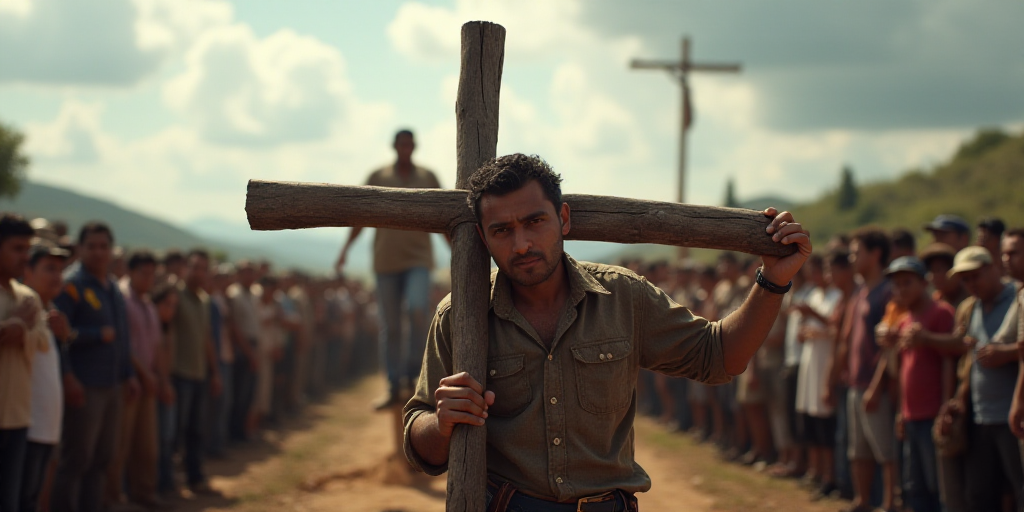What is Good Friday and its Significance?
Good Friday, or Viernes Santo in Spanish, is a crucial date for the Catholic Church. It commemorates the crucifixion and death of Jesus Christ on Calvary Hill, a pivotal act in Catholic faith symbolizing Jesus’ redemptive sacrifice for humanity. Unlike other celebrations, Good Friday is marked by mourning and reflection.
As part of the Easter Triduum, which also includes Holy Thursday and Easter Sunday, Good Friday stands apart. Unlike festive days, it does not feature a mass service. Instead, the Liturgy of the Passion of the Lord takes place, featuring readings like the Passion according to St. John, adoration of the cross, and communion using consecrated hosts from the previous day.
Traditions in Mexico
Across Mexico, numerous communities organize representations of the Via Crucis, dramatizing Jesus’ journey from arrest to crucifixion and death. These performances involve local actors, often community members, portraying biblical characters.
The Via Crucis representation in Iztapalapa is undoubtedly the largest and most emblematic in the country, drawing thousands of spectators from Mexico and abroad. It began in 1843 as a fulfillment of a vow after a cholera epidemic. The eight original barrios of Iztapalapa actively participate in its organization.
Actors, who must be native to Iztapalapa and meet moral and religious criteria, take their roles seriously. The actor portraying Jesus carries a heavy cross over several kilometers to the Cerro de la Estrella, symbolizing Calvary. Hundreds of actors and thousands of penitents (people dressed in purple accompanying the procession as an act of penance) participate, along with the community lining the streets to witness the event.
The Passion of Christ in Iztapalapa has been recognized as Intangible Cultural Heritage of Mexico City and Intangible Cultural Heritage of Mexico, with efforts underway for UNESCO recognition. While Iztapalapa’s is the most renowned, other communities in states like Guanajuato, Michoacán, and others also hold significant representations, each with local nuances. For instance, in Purísima del Rincón, Guanajuato, the figure of “Jews” with intricate masks is notable.
Procesión del Silencio in San Luis Potosí: This event, declared cultural heritage of the state, is conducted in complete silence and is considered one of the most solemn acts during Mexico’s Holy Week.
Fasting and Abstinence: Catholic faithful practice fasting and abstain from eating meat as a sign of penance, following a tradition dating back to the second century.
Liturgical Colors: During processions, participants wear symbolic colors: black represents mourning, purple signifies penance, and red symbolizes Christ’s shed blood.
Labor and Educational Aspects
Although Good Friday is not a mandatory rest day under the Mexican Federal Labor Law, many institutions like banks and schools suspend operations. For the 2024-2025 school year, the Secretariat of Public Education set a vacation period from April 14 to 25 for basic education students and teachers.






